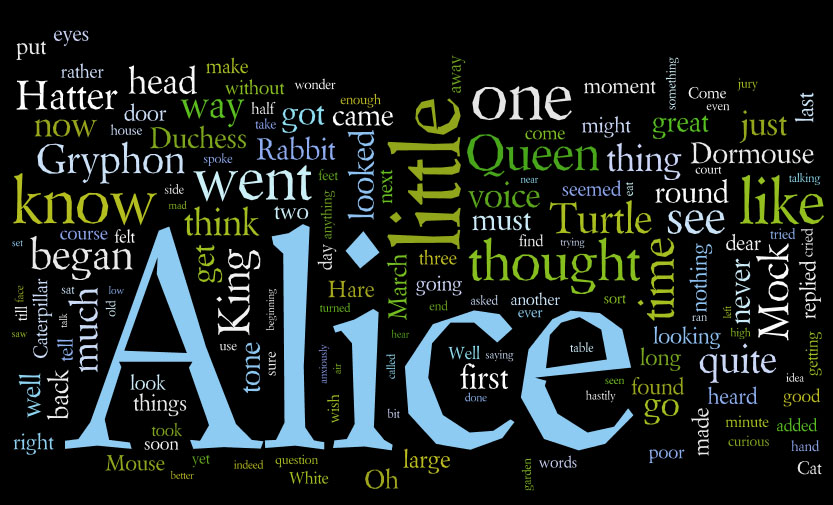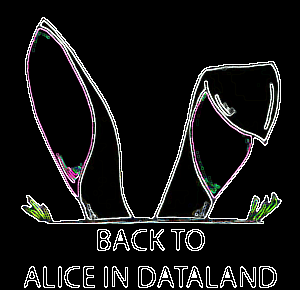XI: Words
Arguably, Alice begins as words—an ordered text. A procedural dissection of Alice's identity across media might rightly ignore what I've spent most of my time examining in favor of examining those words. Could we begin to understand Alice best by looking at the text itself, regardless of its state of remediation? What happens if we examine the work at its most structural level, focusing on the words themselves—the trees, not the forest? The tools of the humanities certainly offer us many potentials ways to dive into that space, particularly if we move from close reading to text mining.
Below is a Wordle I've generated from the complete text of Alice's Adventures in Wonderland. Wordle is a text-cloud generator powered by an algorithm, displaying words from the text at a scale relative to their frequency. A task that would be beyond tedious for us is easy for computing, but is it a meaningful lens into Alice? It certainly places her front and center.
When the words of Alice are removed from their order, certain themes emerge—of knowledge, of thought, of beginnings and rarely of endings. Matthew Wilkens suggests the potential of text mining to make us aware of patterns across a broad spectrum of literature rather than the few texts that tend to get our attention.

What would Alice, with her love of pictures, make of the reconstruction of her own text into a new visualization (sans illustration) via a tool such as Wordle? The most powerful such visualization is built in TextArc, and offers a more readable version of Alice than the Wordle alone. It places words according to their frequency, and shows both the movement of the linear reading through the cloud and the many nodes that link words to one another. It is both conscious of the original structures of the text and dismissive of them, particularly as (like Wordle) it throws out common English words and draws attention instead to characters and verbs.
Chaomei Chen looked at the visualization of Alice in Wonderland in TextArc as a case that draws to light the tension between aesthetics and engineering: that same tension is present in every adaptation, though in perhaps a less clearly visual structure. The idea behind TextArc was to make the inaccessible more immediate: "TextArc was developed to help people deal with the ever-increasing influx of data they are forced to accept and integrate into their knowledge base... as a way to get an overview of a medium-sized body of raw text... and provide pointers into that text to let people more easily get to the things meaningful to their goals" (Paley 1). In that, it is a thoroughly un-Alice construction, too concerned with efficiency.
"You ought to have finished," said the King. "When did you begin?"
Isolating language from the text makes it like the raining code of The Matrix. We can see pieces, but not whole worlds.

